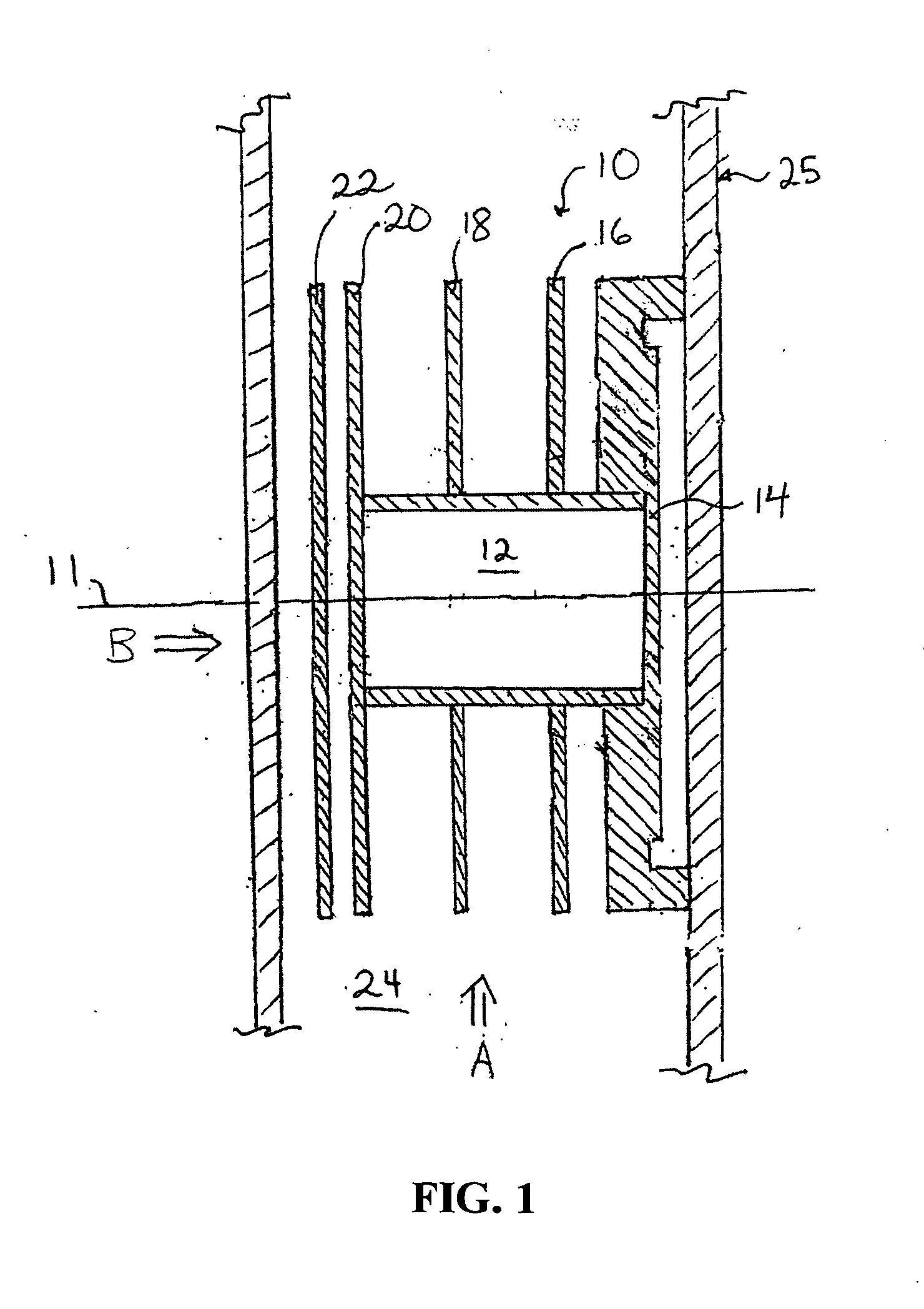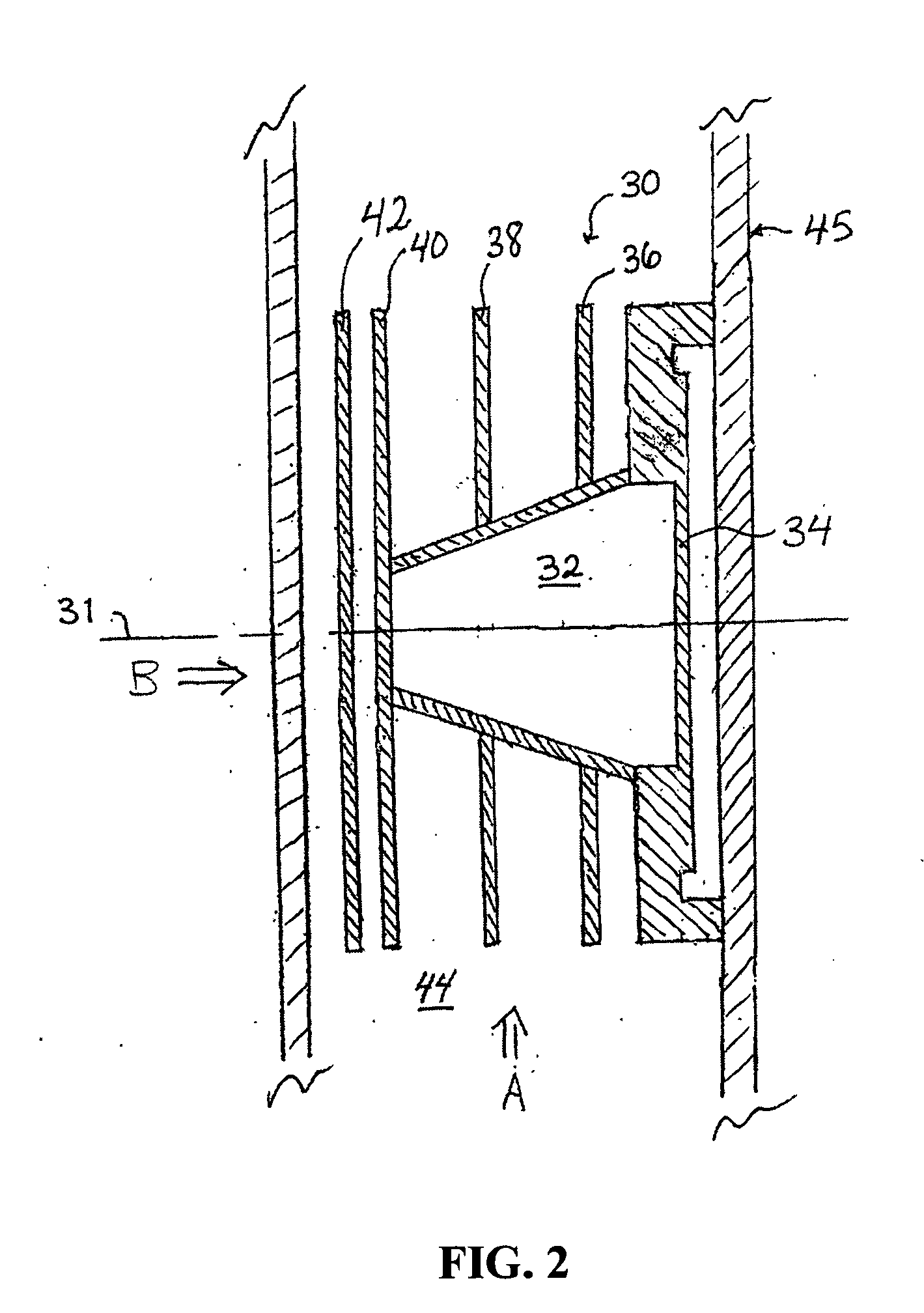Methods for making and processing metal targets for producing Cu-67 radioisotope for medical applications
a radioisotope and metal target technology, applied in the field of making and processing metal targets for producing cu67 radioisotopes for medical applications, can solve the problems of reducing the research effort in this field, requiring rapid production, processing, and 2.6 days of half-life, and achieves the reduction of the ratio of cold copper atoms, the effect of increasing the purity and increasing the production ra
- Summary
- Abstract
- Description
- Claims
- Application Information
AI Technical Summary
Benefits of technology
Problems solved by technology
Method used
Image
Examples
example 1
Photonuclear Production of Cu67 from Metallic Zn68
[0043]Photonuclear conversion of Zn68 to Cu67 was achieved on 40-gram targets of natural zinc (about 18.8% Zn68 by mass). The solid metal zinc targets were contained within water-tight titanium cylindrical capsules, sealed with a stainless steel plug. Irradiation runs were performed with electron beam energies in the range of about 36 to 52 MeV; and beam currents that were sufficiently high (up to 220 microAmperes) to provide electron and gamma ray beam powers of up to about 8 kW. The observed yield of Cu67 agreed with the expected value (i.e., about 3 mCi-per 100 microAmpere-hour) under these conditions. Very significantly, the target design was robust (i.e., no target damage was observed) during long, ten-hour, irradiation runs at high power (about 8 kW).
example 2
Separation of Metallic Zinc and Copper by Zn Sublimation
[0044]As proof of concept, a metallic Zn—Cu alloy target (about 2.5 g, containing about 2.5% Cu) was placed in a quartz tube and irradiated (with neutrons) to produce a small amount of Cu64, which was used as a tracer to monitor the sublimation efficacy. The resulting irradiated target had an activity for Cu64 of about 2×104 pCi. The quartz tube was evacuated at a pressure of about 10−3 Torr and the lower end of the tube, containing the target, was heated in an oven at about 650-660° C. for about 2 hours. Metallic Zn was observed in the upper, cooler part of the tube, but not in the bottom. The contents of the top and bottom of the tube were analyzed. The residue in the bottom of the tube contained copper and a trace of zinc, with a Cu64 activity of about 2×104 pCi, whereas the top of the tube had no Cu64 activity.
example 3
Sublimation of 23.5 g Zinc Target Ingot
[0045]Sublimation separation of the irradiated metallic zinc from the Cu67 radioisotope was achieved on a zinc target ingot having a mass of about 25.3 g. The solid metal zinc target ingot was contained within a vacuum-tight quartz glass tube. The tube was evacuated at a pressure of approximately 0.2 Torr and heated in a furnace at a temperature of approximately 650° C. for about 2.5 hours to sublime zinc away from the Cu67 in the target ingot. A graphical representation of the mass of zinc sublimed versus the time of sublimation is shown in FIG. 6. The rate of sublimation of zinc was greater than 10 g / hour. This rate is a desired goal to economically produce a short half-life radioisotope of Cu67. After sublimation, more than 96% of the Cu67 remained in the solid residue.
PUM
| Property | Measurement | Unit |
|---|---|---|
| energy | aaaaa | aaaaa |
| pressure | aaaaa | aaaaa |
| temperature | aaaaa | aaaaa |
Abstract
Description
Claims
Application Information
 Login to View More
Login to View More - R&D
- Intellectual Property
- Life Sciences
- Materials
- Tech Scout
- Unparalleled Data Quality
- Higher Quality Content
- 60% Fewer Hallucinations
Browse by: Latest US Patents, China's latest patents, Technical Efficacy Thesaurus, Application Domain, Technology Topic, Popular Technical Reports.
© 2025 PatSnap. All rights reserved.Legal|Privacy policy|Modern Slavery Act Transparency Statement|Sitemap|About US| Contact US: help@patsnap.com



